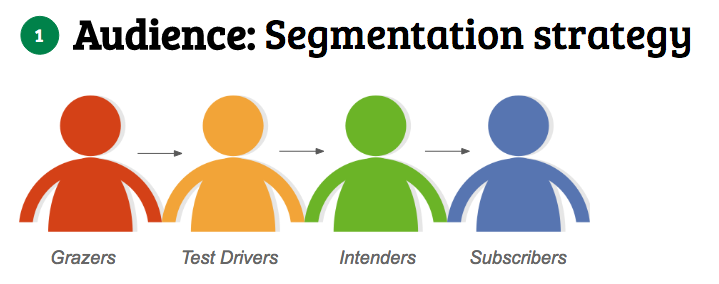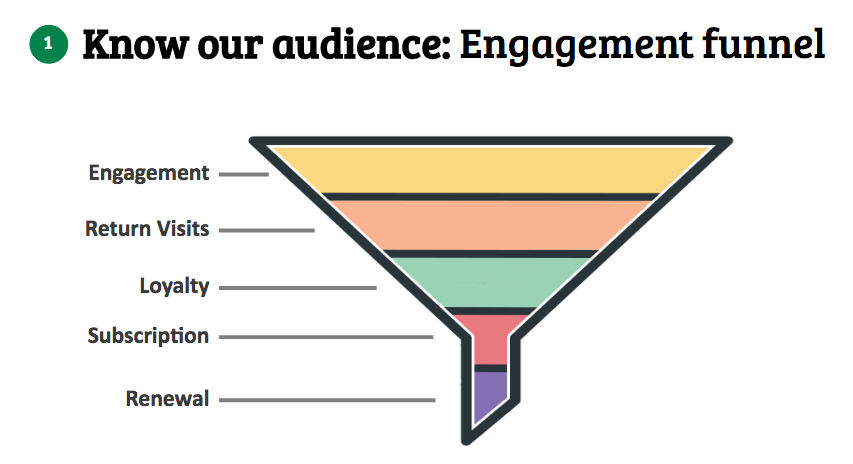Customize the funnel for your own context, strategy and goals for different audience segments
Douglas K. Smith, Quentin Hope, Tim Griggs, Knight-Lenfest Newsroom Initiative,This is an excerpt from “Table Stakes: A Manual for Getting in the Game of News,” published Nov. 14, 2017. Read more excerpts here.
Your newsroom along with others in your enterprise (e.g. marketing and technology) must apply the funneling approach to fit your unique context, strategy and goals for different audience segments.
Segmentation means dividing a broad group of your audience into sub-groups who have shared characteristics. It is essential to Table Stake #1’s requirement to serve targeted content to targeted – that is segmented – audiences. Identifying the unique needs and interests of a different audience segment is enormously helpful to moving those segments through the funnel.
Minneapolis used behavior and usage patterns to identify four audience segments: grazers, test drivers, intenders, and subscribers. (Your segments may be different. And you might use Star-Tribune-like segments for subscriptions but different segments for a niche product or service such as events.) They know what traits separate the segments (for example, referral source, page depth, how recent visits are, frequency of visits). They know how many users are in each group. And they use these segments to choose the actions Minneapolis takes.

Minneapolis’ objectives are: (1) to optimize user experiences at each stage of the funnel; (2) maximize the value to the Strib from user actions at each stage; and, (3) increase yields from one stage to the other all the way to the biggest payoff of all: digital subscriptions. Goals differ for different segments. For example, the objective with grazers is to monetize via advertising and recirculation (e.g. encouraging one more article view) while the objective for intenders is to convert them into subscribers.
Minneapolis works hard to continuously get better at figuring out what actions trigger desired user behaviors within each segment, especially those behaviors through which users progress through the funnel. These tactics included logins, newsletter sign ups, social follows, ad experience, what kind of content focus, and trial access.

Dallas also uses newsletters in one of its funnel approaches. That effort, though, is directed at attracting and converting social users into digital subscribers
Here is how Robyn Tomlin of Dallas described this funnel approach:
- When new users come to the website via a social referral — we prioritize the messaging they get on the article page to try to get them to “like” us on FB:

- When users come back and visit the site a couple more times, we prioritize a request for a slightly deeper level of engagement – the newsletter signup.
- When users sign up for the newsletter and/or continue to return, we prioritize a digital subscription pitch.